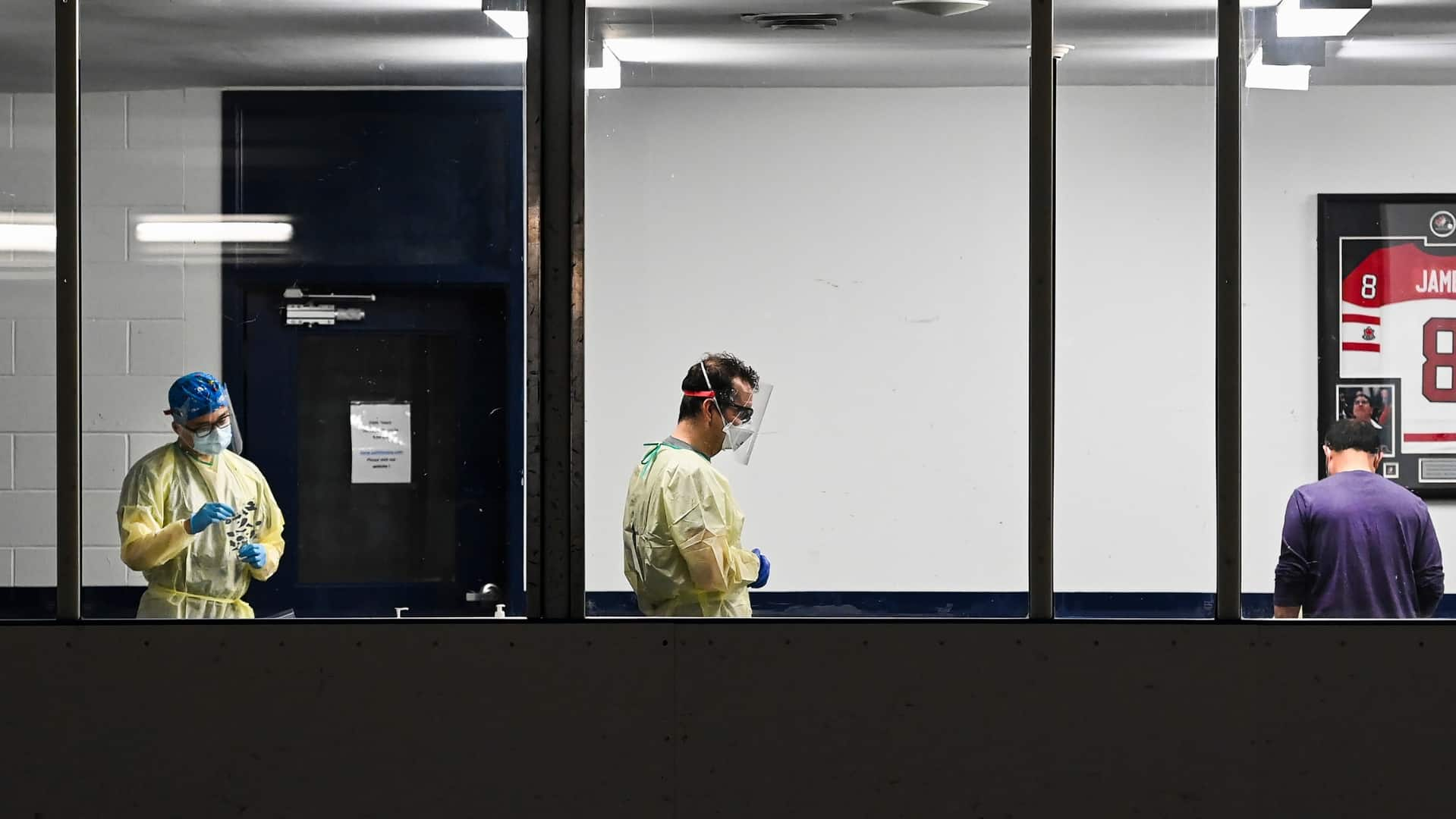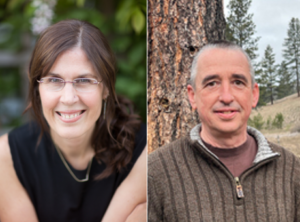A transmission electron micrograph shows SARS-CoV-2 virus particles isolated from a patient. Research teams have recently honed in on potential hallmarks of long COVID, offering insight into the possible mechanisms at play. (U.S. National Institutes of Health)
Different research teams have identified multiple hallmarks of the often-debilitating condition
This story is part of CBC Health’s Second Opinion, a weekly analysis of health and medical science news emailed to subscribers on Saturday mornings. If you haven’t subscribed yet, you can do that by clicking here.
For several years, scientists have tried to untangle one of COVID-19’s persistent puzzles: Why do some people, even after mild infections, go on to develop lasting health issues? And crucially: How do you prevent, treat or even cure those lingering symptoms?
Now, fresh clues are emerging. Several research teams have honed in on potential hallmarks of long COVID, formally known as post-COVID-19 condition, offering insight into the possible mechanisms at play.
Other researchers, meanwhile, are finding overlaps between long COVID and the persistent symptoms some people experience after other types of infections, from influenza to the common cold — suggesting there may be similar triggers for a wide range of little-understood conditions.
There are no smoking guns yet. Still, emerging research could bring scientists one step closer to figuring out treatments to ward off post-infection symptoms ranging from debilitating exhaustion to life-altering “brain fog.”
“We’re getting the sense that there are some tangible mechanisms that can produce some of these symptoms,” said Christoph Thaiss, an assistant professor of microbiology at the University of Pennsylvania’s Perelman School of Medicine.
“And many of them might actually be, surprisingly, shared among many of these conditions.”
WATCH | Research suggests most long COVID symptoms clear up within a year:

Most long COVID symptoms clear up within a year, new research suggests
9 months ago
Duration2:14New research out of Israel suggests most symptoms of long COVID clear up within a year, but some — like weakness and trouble breathing — are more likely to persist.
Studies point to long COVID biomarkers
Two recent studies have tried to tease out long COVID biomarkers — traits in someone’s blood, tissues or bodily fluids that can be measured and tracked, at times offering signals of an infection or disease. (Blood pressure and high cholesterol, for instance, are both common biomarkers physicians analyze at routine medical appointments.)
One new paper, from Thaiss and others at the University of Pennsylvania, was published on Monday in the journal Cell. It looked at both real-world patients — some with long COVID, others who fully recovered — and animal models.
Their research suggests the release of interferons — a group of signalling proteins that cells send out as an alert system when there’s a viral threat — could drive the depletion of a key chemical messenger, serotonin. In turn, that may lead to cognitive impacts such as memory issues or a feeling of “brain fog.”
The team was surprised to find that some people with long COVID still had virus fragments lingering in their guts, long after they were no longer testing positive for the virus. Those particles, located through stool samples, might be enough to trigger the release of interferons.
WATCH | COVID-19 infections rising again:

New COVID-19 vaccines rolling out slowly as cases rise
19 days ago
Duration3:34Doctors and epidemiologists are reporting a surge of new COVID infections. But Canada’s rollout of the latest variant-targeting vaccines is only just beginning, and won’t be in full swing for weeks.
That could set off a chain reaction, leading to inflammation that makes it tougher for the digestive system to absorb tryptophan — an essential amino acid found in food that helps the body make serotonin.
During long COVID, it seems the “peripheral pool of serotonin is depleted, while the brain pool of serotonin is untouched,” said Thaiss. And when serotonin elsewhere in the body dries up, it can disrupt crucial parts of the nervous system. (Scientists still don’t fully understand how serotonin works, but low levels have previously been linked to depression, along with sleep and digestive issues.)
This new research follows another recent biomarker study from a team led by Yale University immunologist Akiko Iwasaki. That paper, published by Nature, involved a comparison of three groups: people with long COVID, those who were infected around the same time but fully recovered, and those who have never had COVID.
The team found differences in blood samples that distinguished long COVID patients from the others, including exhausted immune cells and lower levels of cortisol, a hormone that regulates a wide variety of bodily processes including metabolism and immune response.
Iwasaki’s team also noticed the reactivation of dormant Epstein-Barr virus (EBV) in long COVID patients. This common pathogen can cause mononucleosis (also known as mono) but also infects most people at least once in their lifetime, usually without any symptoms.
“So now we’re kind of thinking that could be indicative of a person’s immune response being dampened by the COVID infection, allowing these latent viruses to become reactivated,” she said. “It’s also possible that [this] reactivated EBV can be leading to some of the symptoms.”
Research still in ‘early days’
In some ways, these efforts to identify biomarkers are raising more questions than answers. But infectious diseases specialist Dr. William Schaffner, from the Vanderbilt University Medical Center in Nashville — who wasn’t involved in either study — says they do shine a spotlight on potential mechanisms at play.
The question now, he said, is: “Why is it that some people can’t turn off the inflammatory response and it continues to smolder, causing this collateral damage?”
It’s still “early days” when it comes to answering that question, Schaffner added, because the latest published studies are fairly small and narrow in scope, based on researchers’ areas of expertise.
“These various studies seem to complement each other,” he added, “even though they’re not exactly duplicative.”
Schaffner and others are hopeful, however, that these kinds of emerging findings could eventually lead to a diagnostic test for long COVID, or to potential treatments.
The study zeroing in on serotonin, for instance, points to existing medications — selective serotonin reuptake inhibitors (SSRIs), a class of drugs most commonly prescribed to treat depression — as one area for future research.
“The million-dollar question is whether we can treat individuals or ameliorate their symptoms by targeting this pathway — either by restoring serotonin levels, through tryptophan supplementation or through the usage of SSRIs, or by eradicating their viral reservoir,” said Thaiss.

Long COVID overlaps with other conditions
The latest studies come at a time when rates of long COVID appear to be dropping. That’s thanks, in part, to widespread use of COVID vaccines, because vaccination appears to lower the risk of developing the condition, according to various studies.
But the condition still impacts millions around the world — with a broad range of symptoms and severity — and many scientists say untold numbers of people likely suffered similar ailments after other types of viral or bacterial infections, long before COVID hit.
New research from the U.K. published earlier this month in The Lancet’s eClinicalMedicine suggests SARS-CoV-2 isn’t the only respiratory virus that can lead to lasting symptoms after someone gets through an initial infection.
The research team analyzed data from more than 10,000 adults and found evidence of lingering health issues following influenza and common cold infections as well, with some symptoms that overlapped with long COVID and some distinct differences.
Long COVID was linked more often to dizziness and issues with someone’s sense of taste or smell, for instance, while lingering symptoms after a cold were more likely to include gastrointestinal issues.
“The fact that we found some similarities and a few differences to me really indicates that different infections will be able to lead to different sorts of symptoms, and when there’s overlap, we’ll be dealing with a similar mechanism in the end,” said Giulia Vivaldi, a statistician and epidemiologist at Queen Mary University of London who is working on the COVIDENCE U.K. study, a prospective population-based look at respiratory infections.
Iwasaki, from Yale, said the findings were not particularly surprising, and agreed with the research team’s conclusion that post-infection health impacts deserve far more scrutiny, beyond just long COVID.
“We don’t really know the frequency of how other types of viruses lead to post-acute infection syndrome,” she said.
“So that’s something that we need to study further.”





